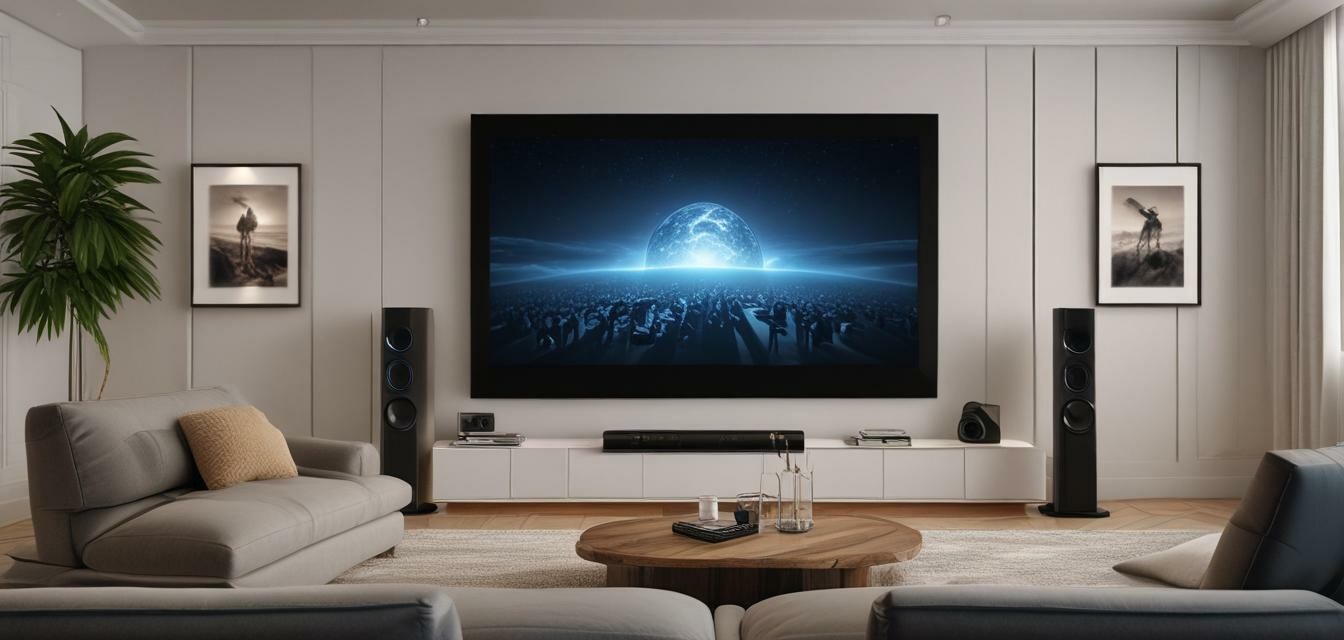
Understanding the Future of Streaming Quality
Key Takeaways
- The rise of 8K streaming is on the horizon.
- Dynamic HDR and advanced audio formats like Dolby Atmos will enhance the viewing experience.
- Bandwidth improvements and new coding technologies will support better streaming quality.
As technology evolves and consumer demands increase, the quality of streaming content is becoming a top priority for home theater enthusiasts. Streaming quality impacts not only video clarity but also audio performance, both of which contribute to an immersive viewing experience. This article explores the upcoming changes in streaming quality standards and how they will affect home theater setups.
Current Streaming Landscape
Today, common streaming resolutions include 4K and even 1080p for many services. While many consumers are satisfied with this level of quality, trends indicate that the industry is moving towards even higher standards.
Resolution and Aspect Ratios
High-definition content is standard, but the future may hold:
| Resolution | Aspect Ratio |
|---|---|
| 4K (3840 x 2160) | 16:9 |
| 8K (7680 x 4320) | 16:9 |
| IMAX (multiple formats) | Various |
The Role of Bandwidth
Streaming is dependent on bandwidth. More bandwidth means richer streams. Upcoming technologies may improve bandwidth availability:
- 5G Technology: Promises faster download speeds, which will be vital for 8K streaming.
- Enhanced Infrastructure: Continued investments in fiber optics will improve streaming experience.
- Adaptive Bitrate Streaming: This technology adjusts video quality to bandwidth availability for seamless viewing.
Upcoming Video Formats
Innovations in video formats play a crucial role in providing better quality:
- 8K Video: Offers cutting-edge detail and a more lifelike viewing experience.
- High Dynamic Range (HDR): Improves color depth and contrast ratio.
- Dynamic Metadata: Enables deeper customization of HDR settings per scene.
Advanced Audio Standards
Enhanced audio is just as essential as video quality:
New audio formats are being developed to complement the high-quality video streaming:
| Audio Format | Key Features |
|---|---|
| Dolby Atmos | Immersive sound experience with audio placement above the listener. |
| DTS:X | Object-based audio that adapts to the viewer's speaker setup. |
| MQA (Master Quality Authenticated) | High-resolution audio streaming designed to offer studio-quality sound. |
Effect on Home Theater Setups
With these advancements, consumers must consider how to upgrade their home theater systems. Here are important factors to keep in mind:
- Ensure your TV or projector supports the latest resolutions.
- Invest in compatible audio systems for immersive sound.
- Upgrade to high-quality cables and connectivity solutions to support new formats.
Conclusion
As streaming technology continues to evolve, home theater enthusiasts should stay informed about changes in streaming quality standards. The promise of 8K streaming, advanced audio formats, and improved bandwidth infrastructure will shape the future of home entertainment. To explore more about how to improve your setup, check out our guide on setup tips or delve into our buying guides for recommendations on equipment that will elevate your home cinema experience.
Pros
- Higher resolution offers a more immersive viewing experience.
- Dynamic HDR enhances visual quality.
- Advanced audio technologies improve sound depth and clarity.
Cons
- Requires new equipment for full benefit of advancements.
- Potentially higher costs associated with premium services.
- Bandwidth limitations may hinder quality on certain connections.
Stay ahead of the latest trends and technological advancements in streaming quality right here. For more updates in the industry, head to our news and trends page.

